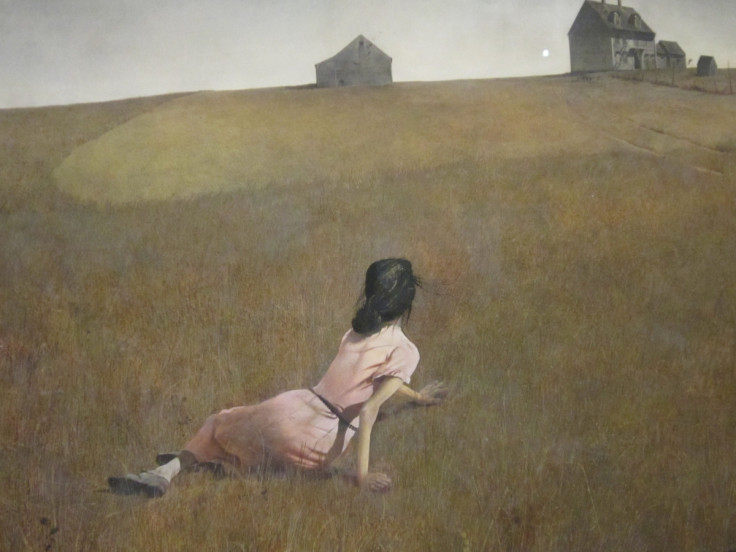Christina's World: Mystery illness of Andrew Wyeth's most famous painting discovered

The woman depicted in Andrew Wyeth's most famous painting, Christina's World, may have been suffering from a group of inherited rare neurodegenerative disorders. For years, this artwork – an essential of American art history - has fascinated scholars, with many trying to uncover the mysteries surrounding the young woman in the frame.
The painting depicts Wyeth's real-life neighbour, Anna Christina Olson, who appears sitting in a field and staring at the horizon. All her life, Olson suffered from a degenerative muscle condition that cost her the use of her legs when she was in her early thirties. Her doctors were unable to pinpoint exactly what was wrong, or to give her a precise diagnosis.
Despite being a popular image of America's pop culture, famously displayed in New York's Museum of Modern Art, Christina's world seems to hide many secrets: what is the woman thinking? What is the disease which is leaving her vulnerable?
A study, presented on Friday 6 May 2016 at the 23nd annual Historical Clinicopathological Conference, provides part of the answer by diagnosing Christina Olson with Charcot-Marie-Tooth disease (CMT).
Charcot-Marie-Tooth Disease
The Historical Clinicopathological conference has become famous thanks to its original focus: it is devoted to identifying the disorders that afflicted historical figures. In the past, scientists have investigated the diseases that the likes of Lenin, Darwin or Lincoln may have suffered from.
In this year's meeting, a professor of neurology, paediatrics and medical genetics at Minnesota's Mayo Clinic, Dr Patterson, decided to research the case of Christina Olson, as he was particularly attached to the painting.
"This was a fascinating case," he says. "This painting has long been a favourite of mine, and the question of Christina's ailment was an intriguing medical mystery."
Patterson got access to documents regarding the young woman's medical history and went through all of Wyeth's artworks which featured her, including Christina's World. The way the artist portrayed his friend, he reasoned, would give him useful clues about her physical state.
His analysis of the paintings and the medical data reveals that the woman probably suffered all her life not from polio - as it was previously hypothesised - but from CMT, a group of genetic disorders that damage the peripheral nerves.
Though the disease is not life-threatening, the daily consequences can be disastrous for patients, affecting their movements and their ability to walk. People with CMT typically experience muscle weakness and numbness in the feet, ankles, legs and hands and may have very arched - or very flat -feet. When Christina Olson was alive, no treatment existed. This is still the case today, even if some measures can be taken to help patients with their symptoms and increase their mobility.
Medical progress
By highlighting the plight of prominent figures like Olson, Patterson hope he will shed light on the people affected today, to help them.
"This is a amazing piece of medical detective work," concludes Dr Philip Mackowiak, who founded the conference. "It brings home the fact that medicine has learned enormous amounts in the past few decades."
© Copyright IBTimes 2025. All rights reserved.




















